Categories
- Argentina
- Chile
- Antarctica
- Easter Island
- Falklands (Malvinas)
- Bolivia
- Peru
- Uruguay
- Paraguay
- Brazil
- Venezuela
- Colombia
- Ecuador
- Galapagos
- Panama
- Costa Rica
- Cuba
- Nicaragua
- Honduras
- El Salvador
- Guatemala
- Belize
- Mexico
- Latin American Xmas
Pages
- Map of South America
- Home Page
- First week in Latin America – October 2009
- Map of Central America
- Contact Us
- The Jesuit Missions in South America
- A week in Buenos Aires
- Street Art of Buenos Aires
Archives
- October 2011 (3)
- September 2011 (9)
- August 2011 (10)
- July 2011 (7)
- June 2011 (6)
- May 2011 (11)
- April 2011 (10)
- March 2011 (4)
- February 2011 (5)
- January 2011 (6)
- December 2010 (6)
- November 2010 (4)
- October 2010 (8)
- September 2010 (5)
- August 2010 (7)
- July 2010 (5)
- June 2010 (6)
- May 2010 (6)
- April 2010 (7)
- March 2010 (6)
- February 2010 (9)
- January 2010 (4)
- December 2009 (8)
- November 2009 (5)
- October 2009 (2)
Costa Rica´s Caribbean Coast
19th March 2011
Entering Costa Rica from Panamá [1] was by walking across a long rickety railway bridge, completing immigration formalities on either side of the river.
.
We did not get far along the road, stopping at Cahuita [2], a tiny village with only a few roads and lots of Caribbean character (and characters). A long black sand beach stretches away to one side with a white sand beach on the other. It was coconut prawns, black beans and rice for dinner. Resident howler monkeys wake the town each morning at 5 am.
.
Following the coast north we travelled 4 hours by boat from Puerto Limón to the remote village of Tortuguero [3] (pop. 550), through a maze of canals. (There are no roads into or in Tortugero, which means place of turtles.) Jungle overhanging both banks ensured a lot of bird sightings as well as sloths, monkeys and lizards. The village lies on a narrow strip of land between the ocean and a long narrow lagoon. It is the most important nesting ground for the green sea turtle in the Western Hemisphere. The National Park, established in 1975, works closely with the community to ensure minimum impact by tourism.
.
We stayed at Casa Marbella in a nice room upstairs with cooling breezes looking out over the river. A peaceful way to tour the waterways of the National Park is in a canoe paddled by Ernesto. He was born in the village and has extensive knowledge of the flora and fauna in the area.
.
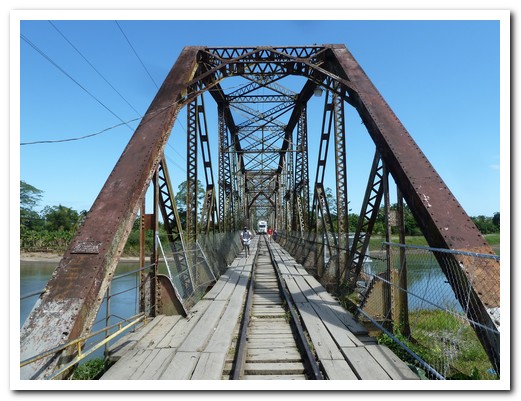
The bridge into Costa Rica
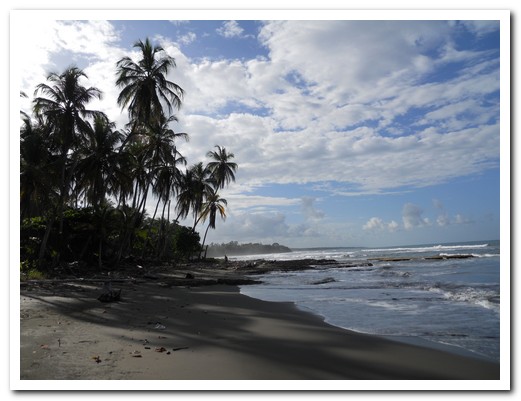
Black sand beach at Cahuita
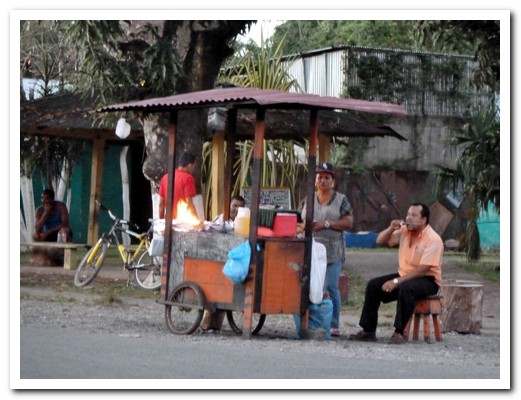
Food cart in Cahuita
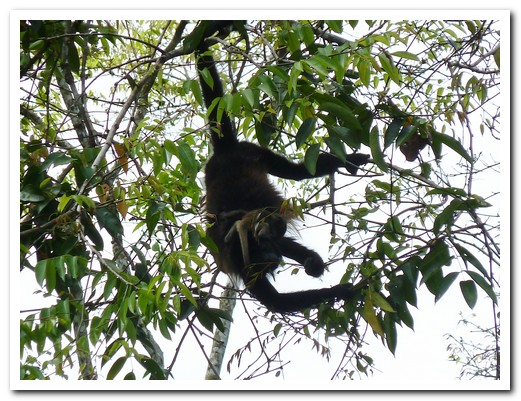
One of Cahuita´s resident howler monkeys
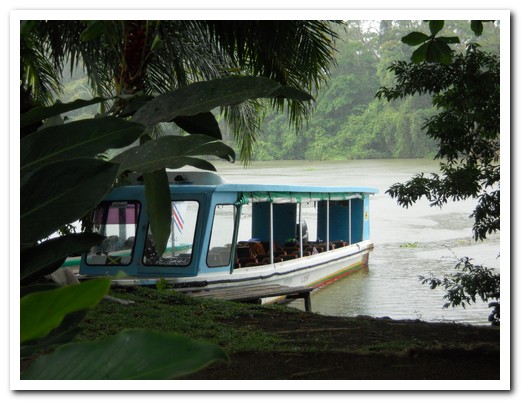
River boat to Tortuguero
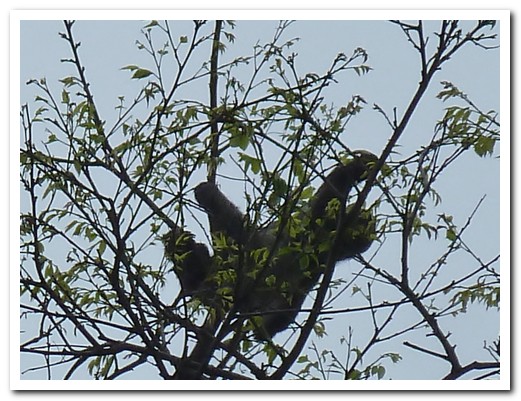
Sloths high in the trees along the river
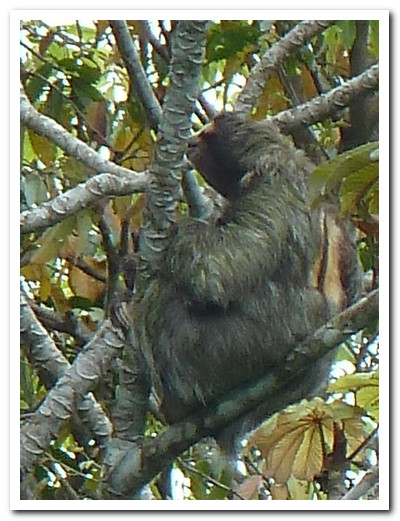

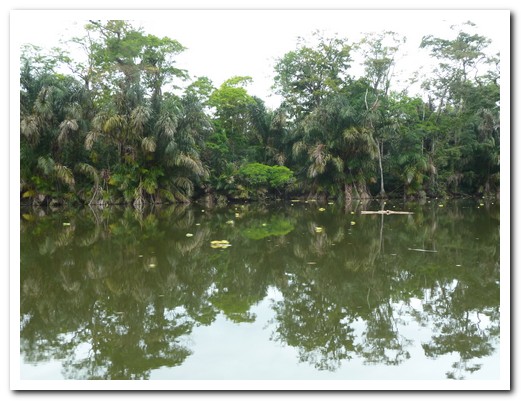
Jungle lines both sides of the canal to Tortuguero

Howler monkey

Abandoned railway bridge appears out of the jungle
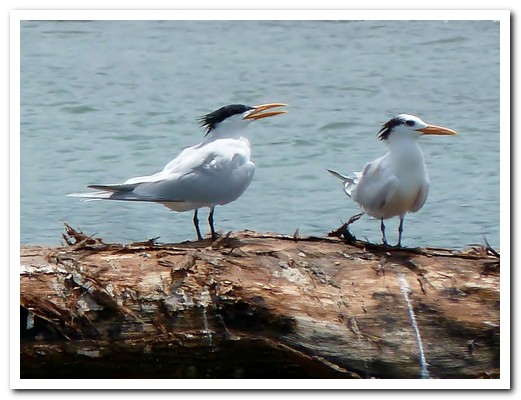
Seagulls
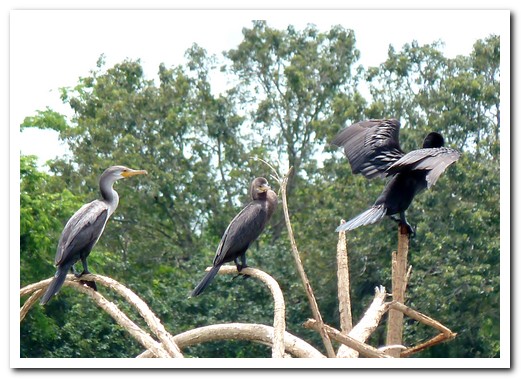
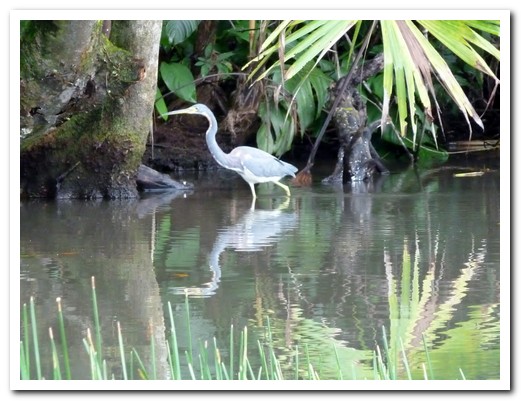
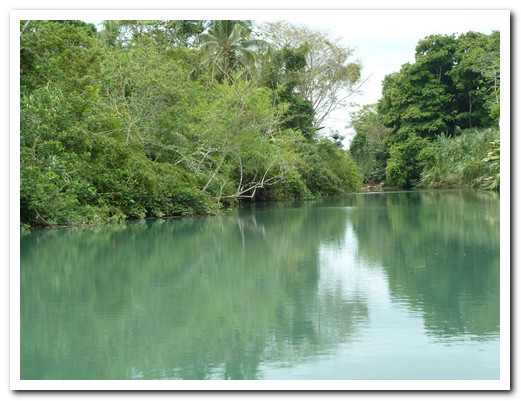
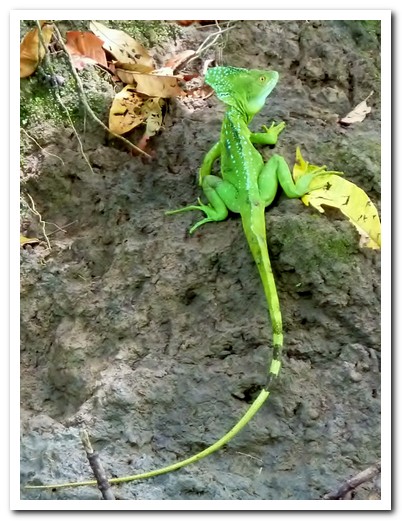
Jesus Christ lizard (walks on water)
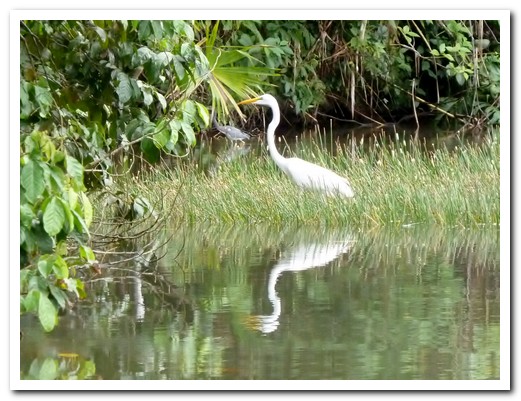
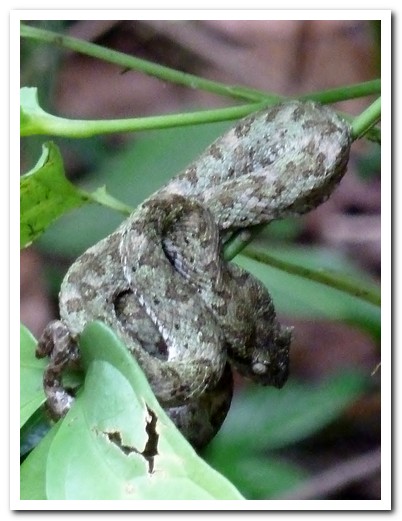
Venomous snake
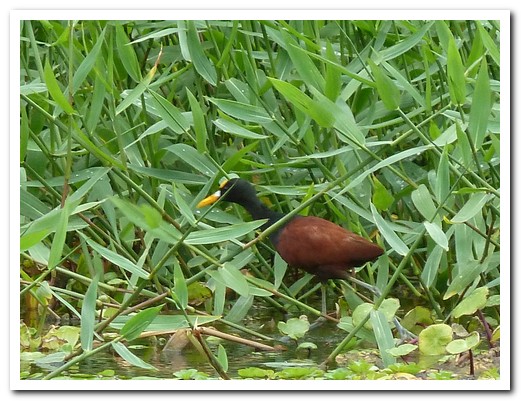
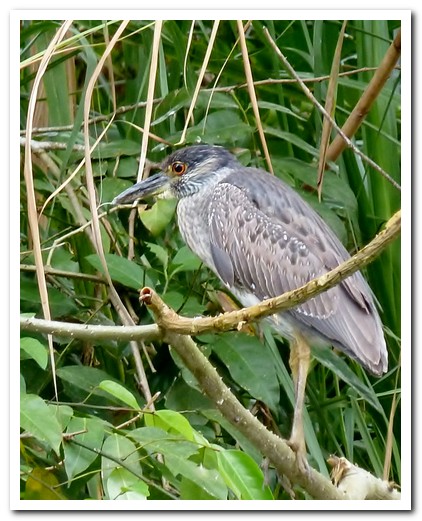
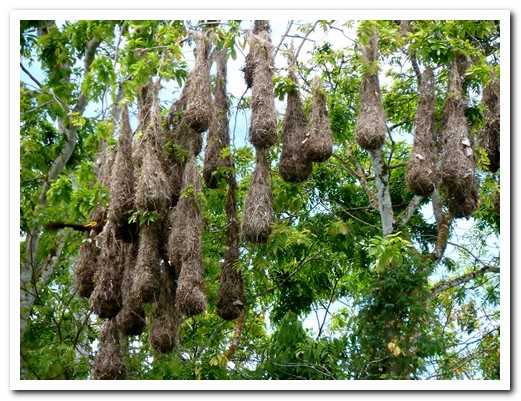
Bird entering the Oro Pendula nests
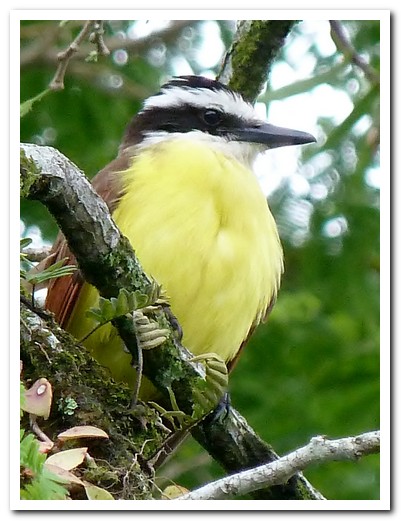
Fly catcher
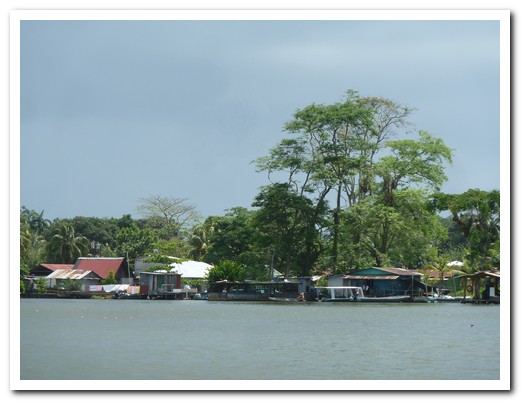
Arriving at Tortuguero village
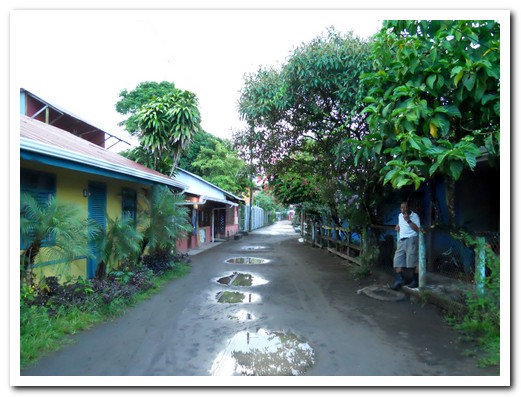
Main street of the village
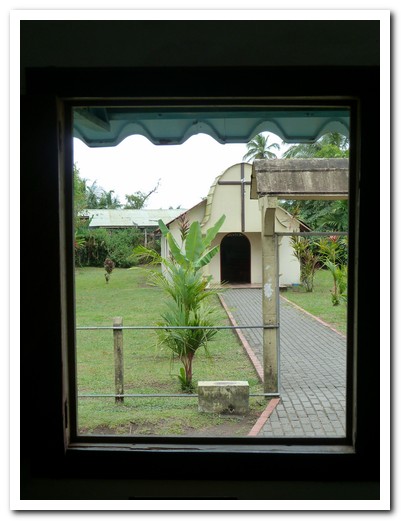
Catholic church
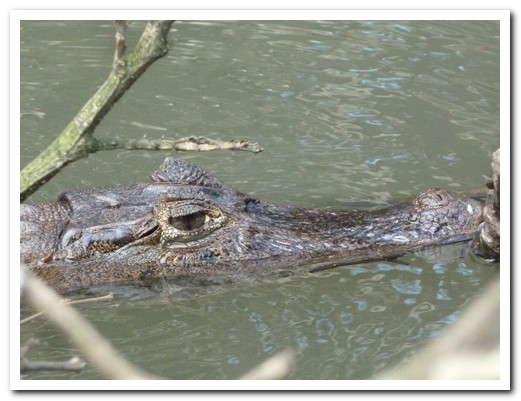
Caiman
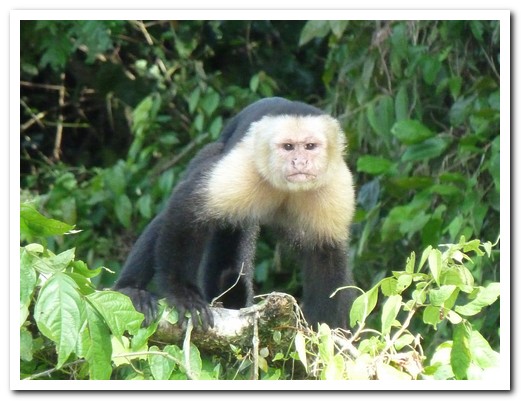
White faced monkey
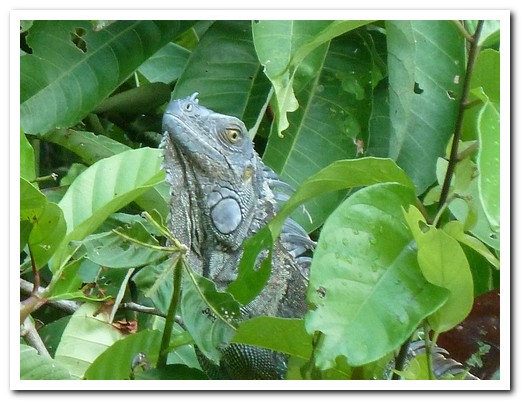
Iguana
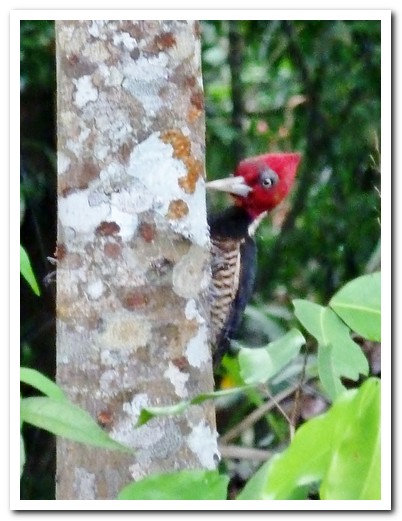
Woodpecker
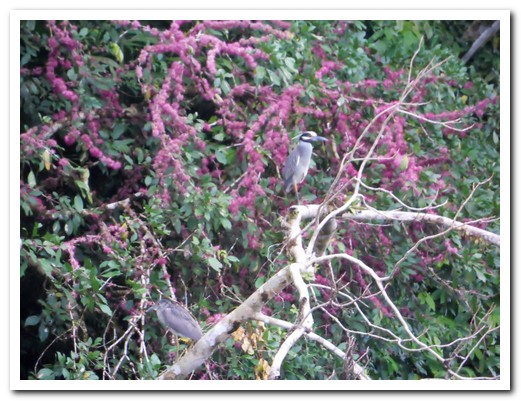
Mangrove tree in flower
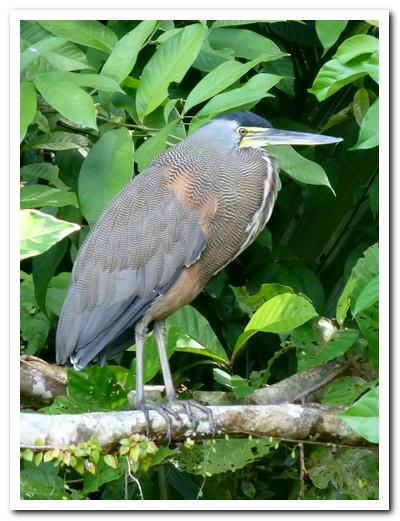
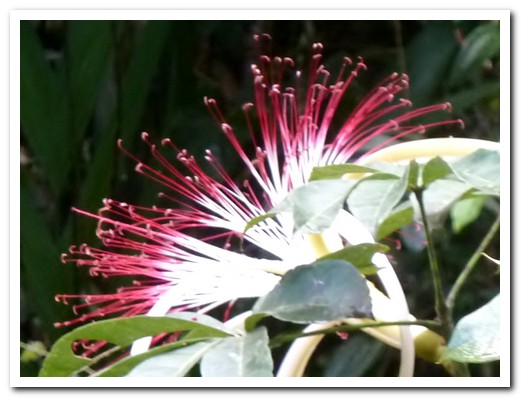
Large rainforest flower
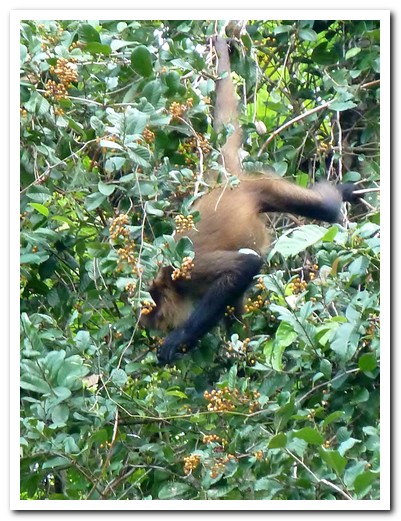
Spider monkey
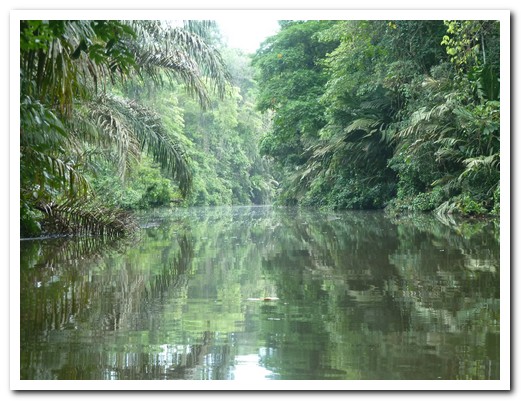
Canoeing the narrow creeks
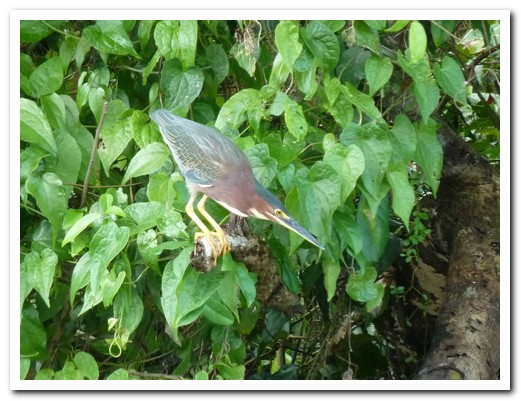
Ready, set, go
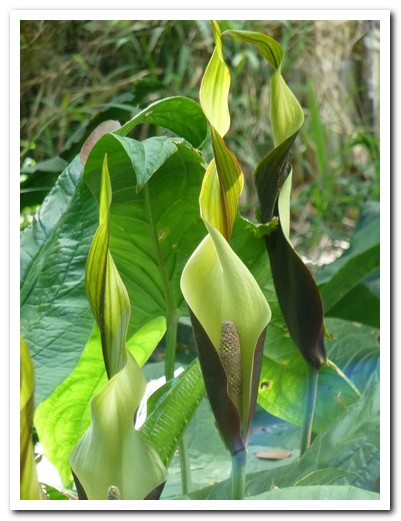
Unusual flower

River otter
North Central Costa Rica
19th April 2011
There was little to keep us in San José [4], the capital of Costa Rica. After a visit to the rim of nearby steaming Volcán Poás surrounded by coffee plantations, we headed to La Fortuna [5], in the central north. The main attraction here is the perfect cone shaped, active Volcán Arenal.
.
In the lush, tropical garden setting of Arenal Natura Ecological Park we were able to observe rare and endangered frog in large, plant filled terrariums. The enthusiastic, knowledgeable staff took time to point out the well camouflaged frogs and explain the different breeding habits. There are about 30 different species, some you could never see in the wild.
.
To reach Monteverde (green mountain) [6], we took a boat across Laguna de Arenal followed by a bus over rolling green hills of pasture land and forest. Together with the little village of Santa Elena, Monteverde offers it all, swinging through the trees, cloud forest trails, frogs, birds, butterflies, orchids, hummingbirds, and lots of tourists. Next stop Nicaragua via Peñas Blancas [7].
.
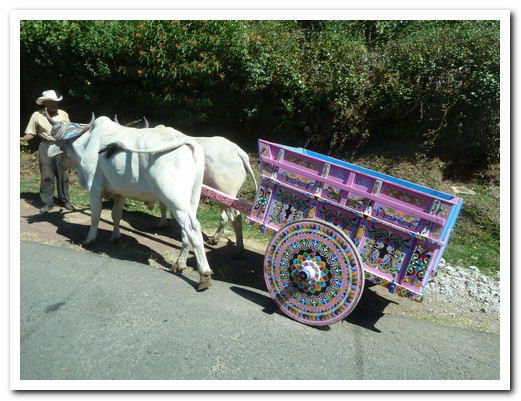
Traditional painted coffee wagon
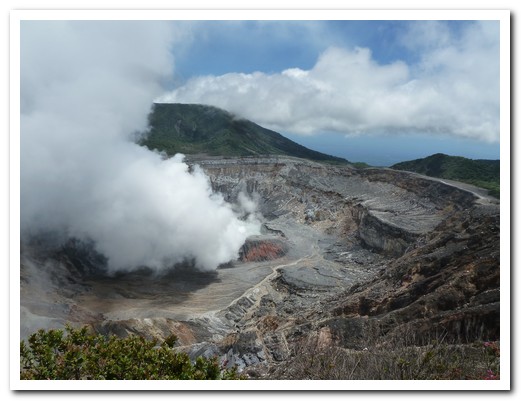
Smoking Volcán Poás
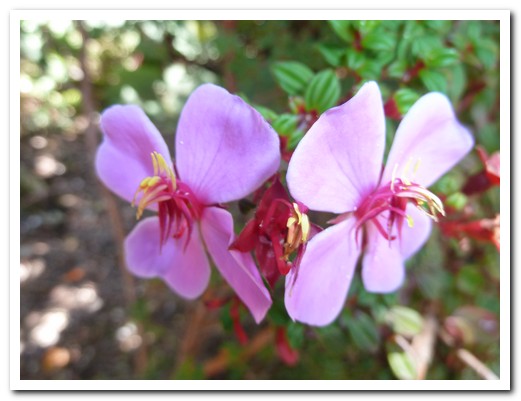
Endemic flower in the acidic atmosphere of the volcano
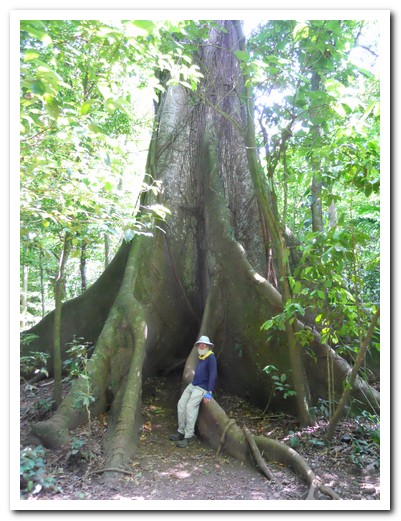
Huge Ceiba tree, about 100 years old, in the Arenal National Park
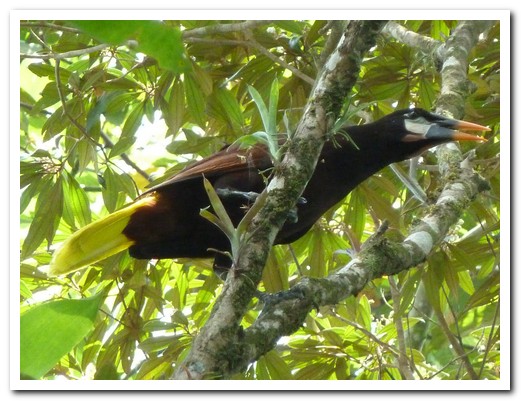
Oro Pendula bird
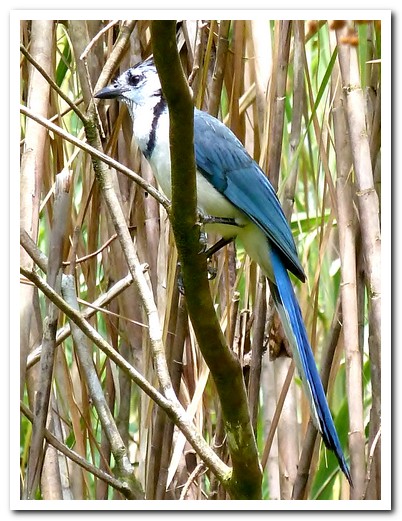
Many of these blue Urraca birds around La Fortuna
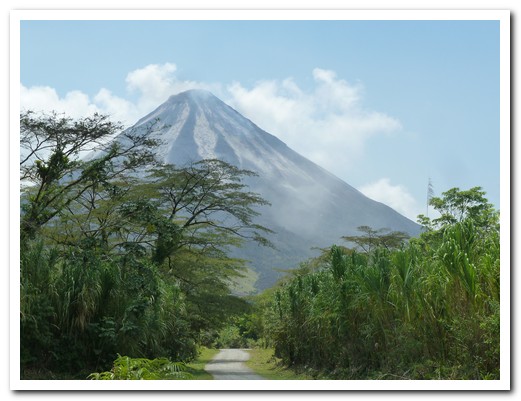
Volcán Arenal
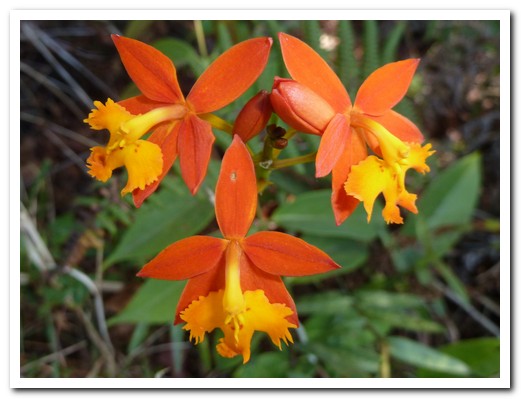
Orange orchids on the volcano

Ginger flower
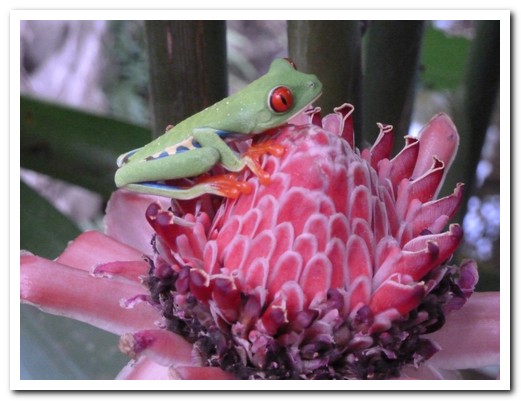
Red eyed tree frog
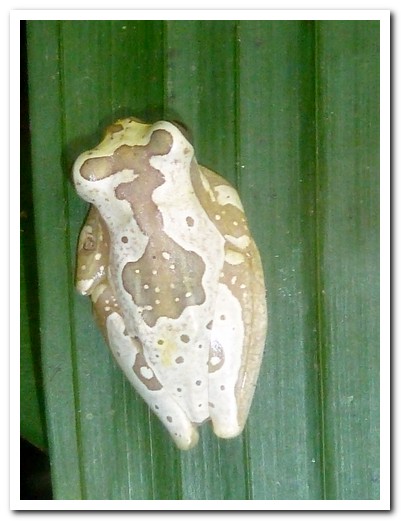
Hour glass frog
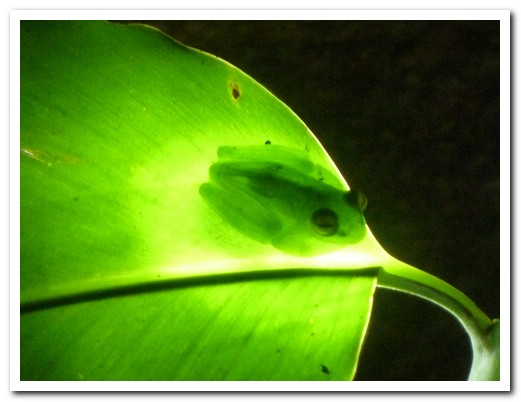
See-through glass frog
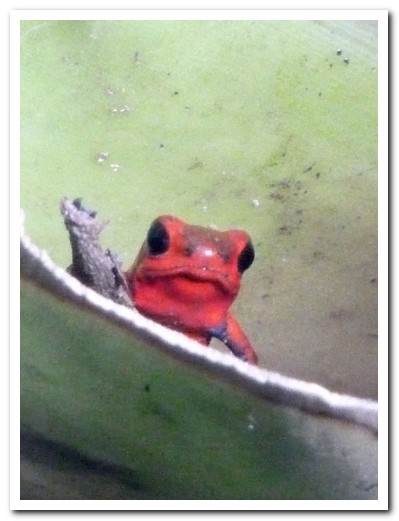
Tiny poison frog
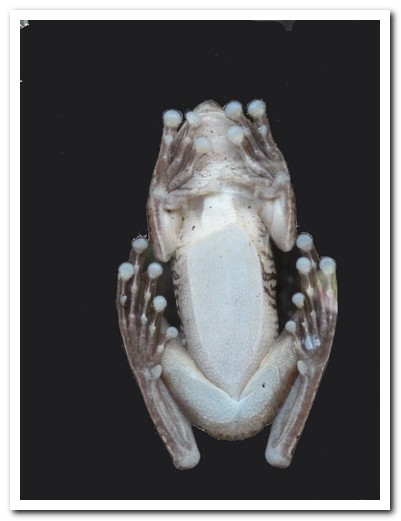
The only frog with a spur for fighting
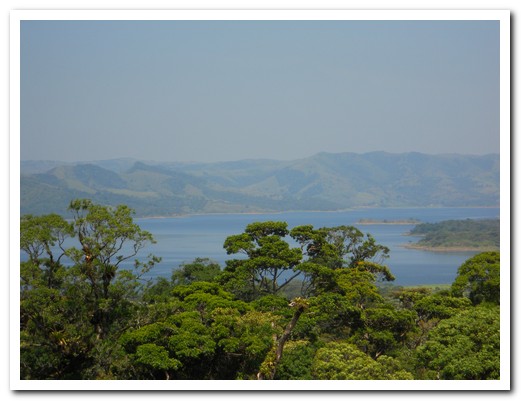
Laguna de Arenal
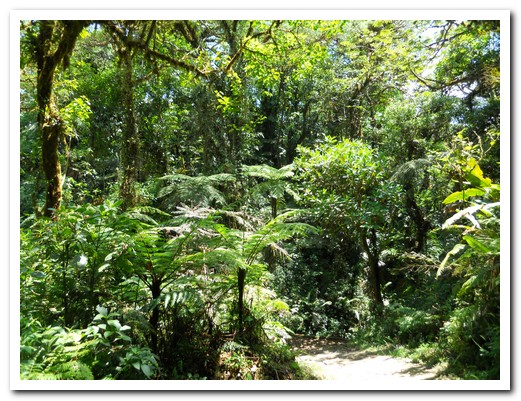
Monteverde Cloud Forest
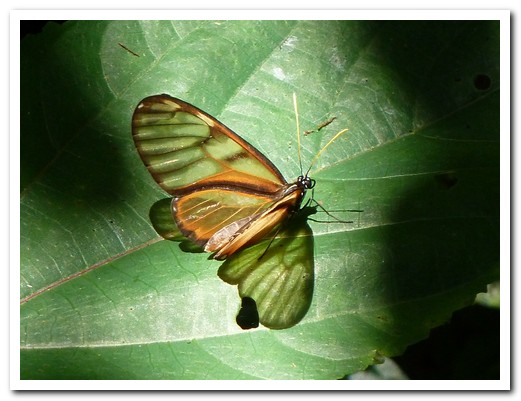
Butterfly

Hummingbird

Hummingbird
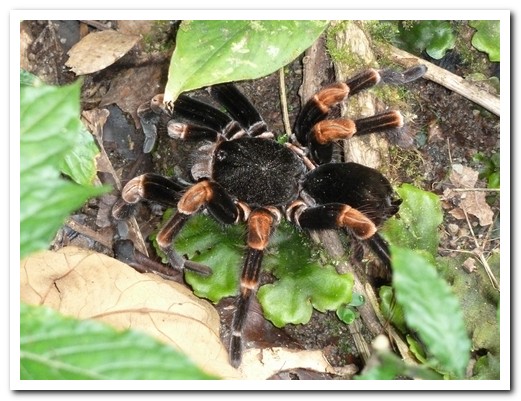
Tarantula
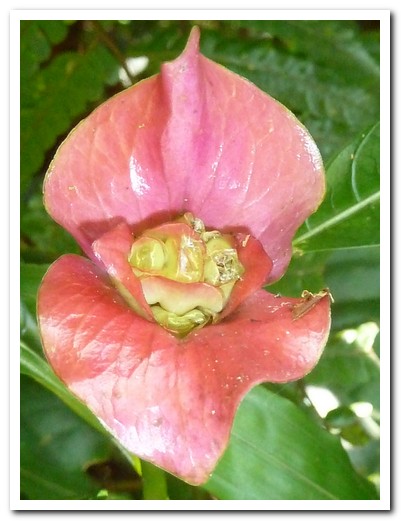
Flower of the cloud forest
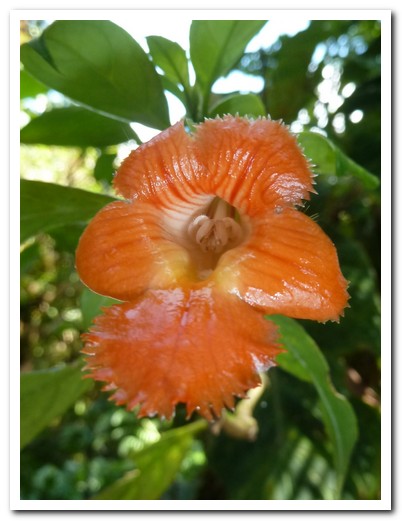
Another forest flower
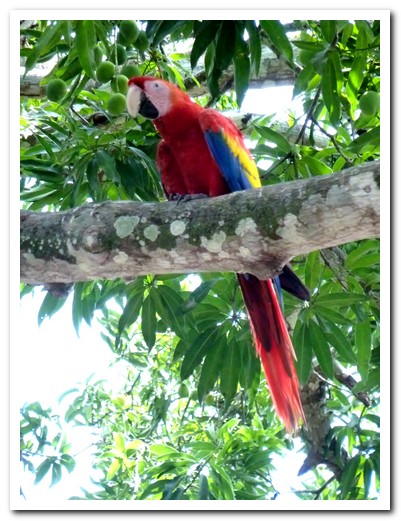
Bright coloured parrot